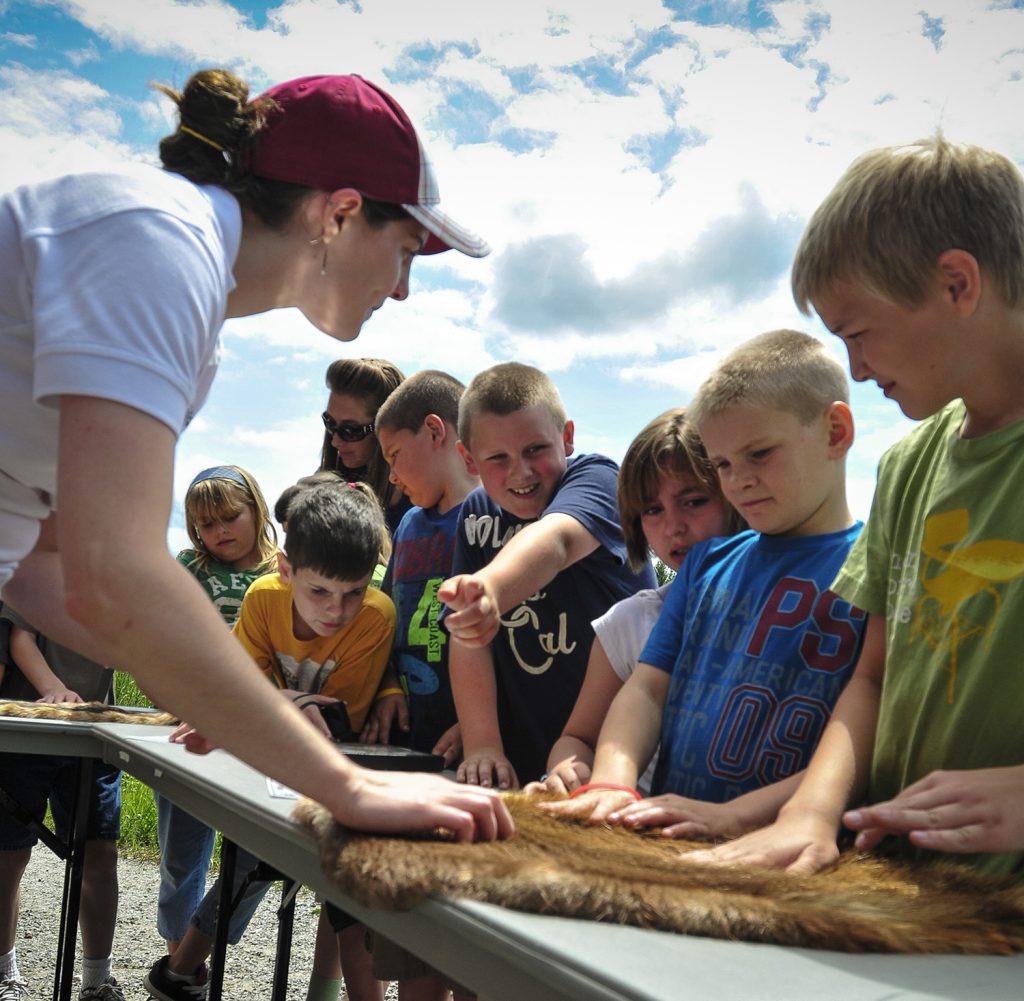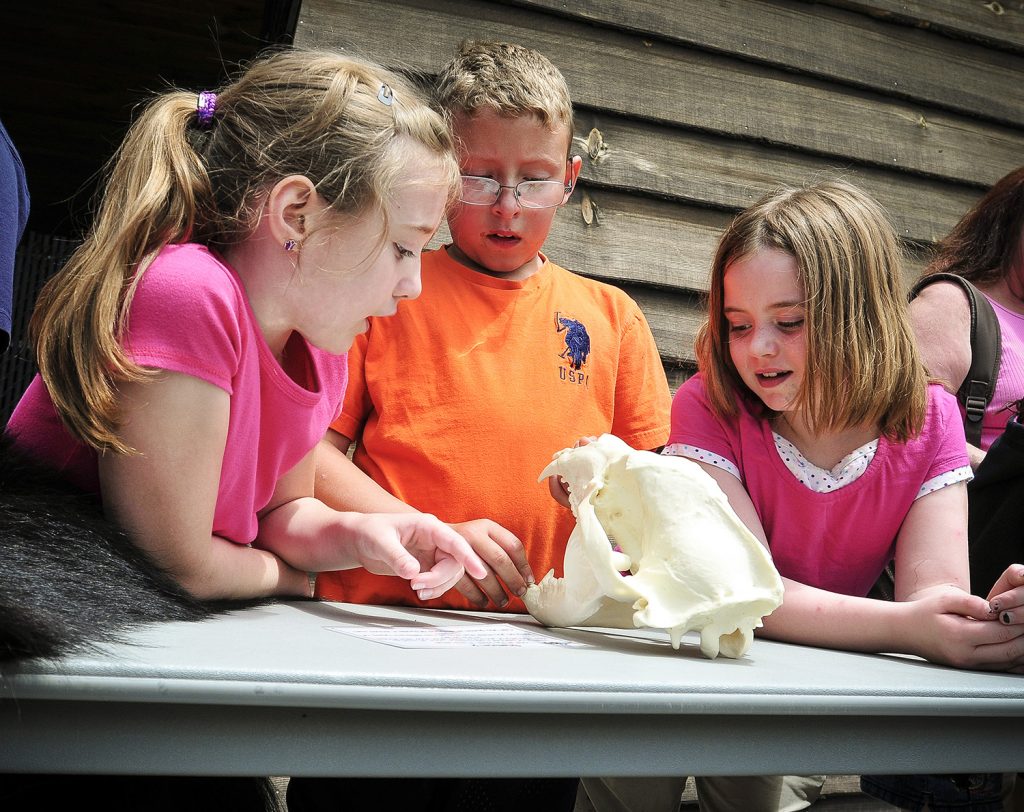Visual Thinking Strategies
This innovative project focused on developing, implementing, and disseminating a model program – Visual Thinking Strategies (VTS) in Science – to create engaging learning opportunities in both science museums and schools. The primary goals of VTS in Science were to provide ongoing capacity-building with other museum professionals, VTS professional staff, and elementary education professionals to implement a long-term program to better prepare science museum professionals and elementary school teachers in areas such as creativity, critical thinking, visual literacy, and problem solving.
The Wild Center received an IMLS National Leadership Grant in 2014 that supported the three-year project. This collaborative learning process was led by The Wild Center and partners including: Visual Thinking Strategies, a nonprofit organization focused on visual literacy research and education; LP Quinn Elementary School in Tupper Lake; three science museums (EcoTarium, Rochester Museum & Science Center, and the Seattle Aquarium) and the Isabella Stewart Gardner Art Museum. The project was evaluated by Randi Korn & Associates.
The Wild Center received an IMLS National Leadership Grant in 2014 that supported the three-year project. This collaborative learning process was led by The Wild Center and partners including: Visual Thinking Strategies, a nonprofit organization focused on visual literacy research and education; LP Quinn Elementary School in Tupper Lake; three science museums (EcoTarium, Rochester Museum & Science Center, and the Seattle Aquarium) and the Isabella Stewart Gardner Art Museum. The project was evaluated by Randi Korn & Associates.

The goals we set to achieve included:
- Creating a supportive Community of Practice for VTS in Science that draws on current research, evaluation, and practice to develop effective informal and formal learning experiences.
- Implementing a model 3-year VTS in Science professional-development program for science museum professionals and elementary teachers centered on VTS to help teach 21st century skills
- Training and facilitation for teachers and science museum professionals with the resources and knowledge necessary to develop VTS in Science experiences and programs relevant to their daily teaching.
- Facilitating a long-term collaborative process and model school-museum partnership between a diverse group of education providers including science museums, a natural history museum, an aquarium, and partner elementary schools.
- Providing evidence through evaluation on the effectiveness of the model for replication in other museums.
The Story of VTS in Science
VTS in Science focused on the development, implementation, and dissemination of a 3-year professional development program to adapt and apply the VTS method in science education and museum contexts. Over 50 science museum professionals and teachers contributed to this community of practice, creating new intentionally-developed, informal and formal learning experiences using VTS as the foundation. The participating science educators found VTS to be a successful, adaptable, learner-centered teaching method. The VTS method expanded the educators’ capacity to observe, think, listen, and communicate, thereby promoting these lifelong learning skills to their students and visitors. Inherent in the integrated application of VTS in Science are creativity, innovation, visual literacy, problem solving and critical thinking, which are essential 21st-century skills that museum and classroom educators can use in their approach to teaching. This project was made possible in part by the Institute of Museum and Library Services Award No.: MG-10-14-0065-14.
For further information
Additional VTS in Science resources are located at www.vtshome.org/science
This is a subscription based site designed for a more in-depth dive into the applications of VTS to science content and supportive resources for educators. In addition to the VTS in Science content located on this page, the VTS subscription site features the following: VTS in Science pathway for setting goals, identifying audience needs and image/object selection and additional downloadable PDF’s providing cross-curricular activities to pair with VTS in science discussions. Please see VTS events for any future nationally offered VTS in Science Workshops. The VTS in Science Workshop is for educators working in science contexts such as museums, parks, classrooms who want to design learner-centered experiences for their students/visitors. This hands-on workshop focuses on developing VTS facilitation skills with art and then shifts to applications for science contexts. The VTS in Science Workshop was developed by science educators, school teachers and VTS trainers during a multi-year project funded by the Institute of Museum and Library Services.
Join the conversation on Facebook
The VTS in Science Facebook group was created as a free, easily accessible, convenient platform to informally share practice, in-the-moment discussions, and ideas for science “image/object” selection. The VTS in Science group will be shared from the web page as a resource. Join the conversation on VTS in Science or be inspired by other educators at the VTS in Science Facebook page.


